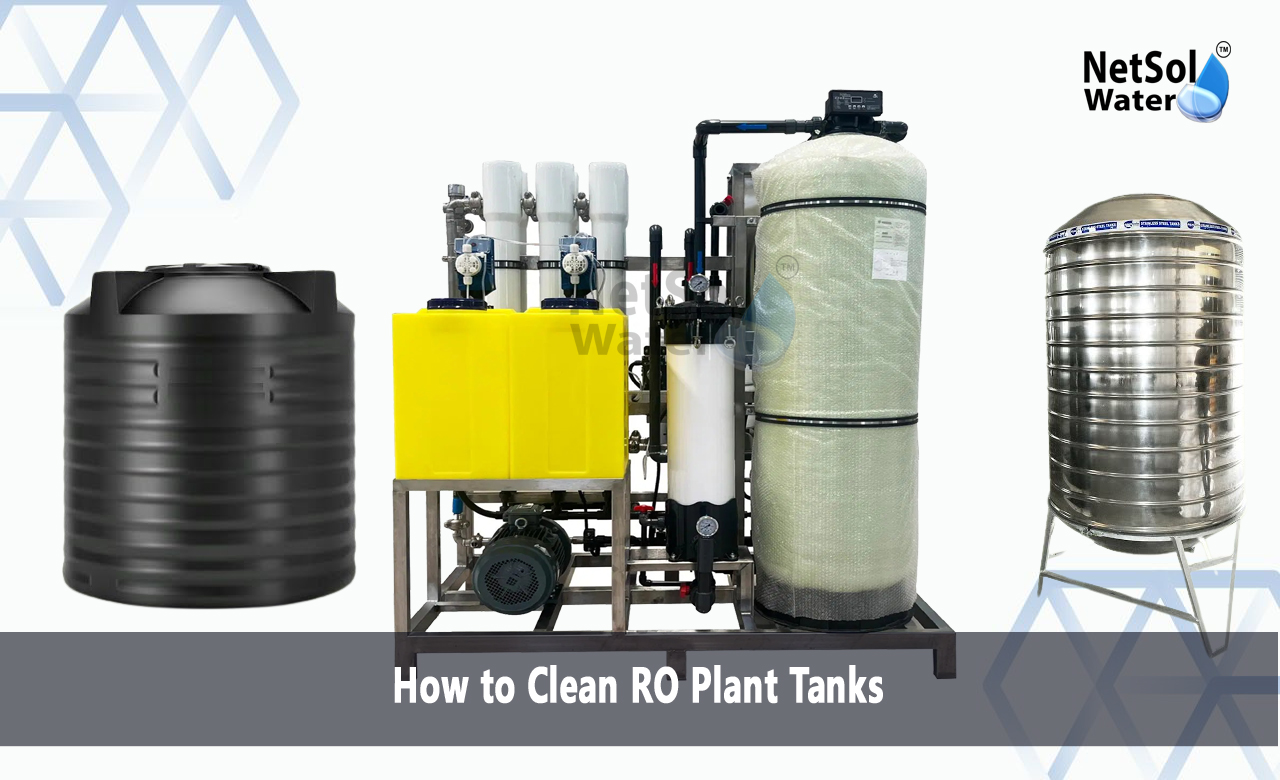How to Clean Commercial RO Plant Tanks?
Reverse Osmosis plants are useful in the production of clean, purified water for domestic, industrial, and commercial purposes. Over time, sediments such as scale and biological particles may build up in RO tanks, reducing the water quality along with the efficiency of the system. Cleaning of RO tanks is necessary for maintaining the system’s performance, along with ensuring the safe production of drinking water. This blog explains the processes of how to properly clean the tanks of RO plants.
Why Is It Important to Clean RO Plant Tanks?
Scheduled cleaning of RO tanks helps reduce and eventually prevent the filter clogging that would otherwise compromise water quality and efficiency. This also increases the longevity of the RO plant while optimizing its maintenance cost and ensuring flow and pressure of the water. A lack of scheduled cleaning increases the risks of bacteria growth within the tanks, along with unpleasant smells and damages to the RO membranes.
Steps to Clean RO Plant Tanks
· Turn Off The RO Plant: Prior to beginning the cleaning process, ensure that the RO plant is turned off and is no longer connected to power. This should be done to maintain safety and prevent any destruction from occurring during the cleaning process.
· Drain The Tank: To eliminate all of the water in the tank, open the tank valve. Ensure that the tank is empty prior to fulfilling the next steps.
· Prepare a Cleaning Solution: Use a solution of water mixed with a suitable cleaning agent, like mild bleach solution or a degreaser made exclusively for the filter. Carry out this process following the manufacturer’s instructions for the implementation of the correct dilution.
· Clean the Tank Interior: Pour the cleaning solution into the tank after which you can take a soft brush or cloth to gently scrub the interior surfaces. The area’s corners and other parts where dirt might collect are to be done carefully.
· Rinse Thoroughly: Scrub the tank in the end with the help of a piece of the damped cloth and then rinse it properly with clean water to remove the solution standing in the surface. Rinsing should be repeated until no traces of the cleaner are remaining.
· Sanitize the Tank: For better safety, you may sanitize the tank with diluted disinfectant and allow it to stay for a recommended period. Finally, you can drain and rinse the tank to make sure that all disinfectants have been removed.
· Reassemble and Refill: Reconnect the tank with the RO plant, turn on the system, and let the tank fill with water. The system has to be run a few times before the water is safe for drinking to get rid of any remaining residues.
Best Practices for RO Tank Maintenance
· Regular Cleaning Schedule: Clean the RO tank at least every 6 to 12 months and use gentle cleaner if water quality problems emerge this often.
· Use Proper Cleaning Agents: One of the cleaning solution directions will take care of the problem, if a cleaning solution does not kill the bacteria, even more, to avoid damage to the oxygen zone, do not use the solution.
· Inspect for Damage: On the process of cleaning, carefully inspect the tank for wear signs, cracks, or leaks, and if there is any, and fix it as soon as possible
· Monitor Water Quality: Be sure the water output from the RO plant is tested regularly, meet safety criteria, and falls carefully into the eco-friendly category.
Conclusion
The plant RO tanks must be cleaned regularly if water quality is to be preserved at an adequate level and if the systems are to function efficiently. Thus, these steps and best practices will help you optimize your RO plant to provide you with clean and safe water. Maintenance ensures that the system does not only last longer but also ensures the health and safety of its users.
Do you need an advice or assistance on selecting the best water and waste water treatment unit? We have solutions for all your problems!
Let us know your problem, our experts will make sure that it goes away.
For an assistance or related query,
Call on +91-965-060-8473 Or write us at enquiry@netsolwater.com



